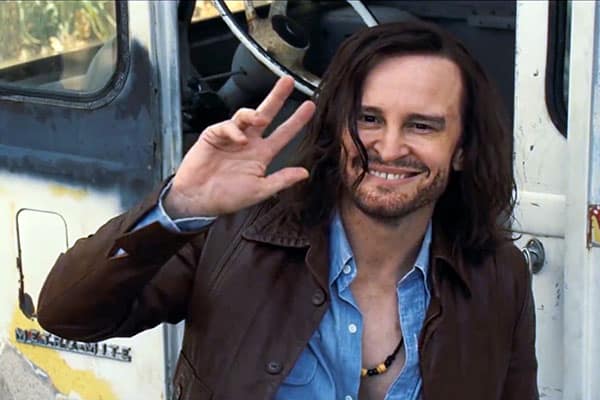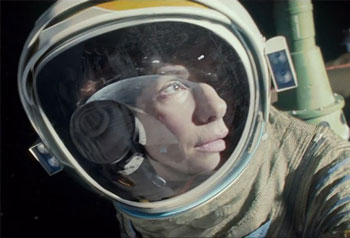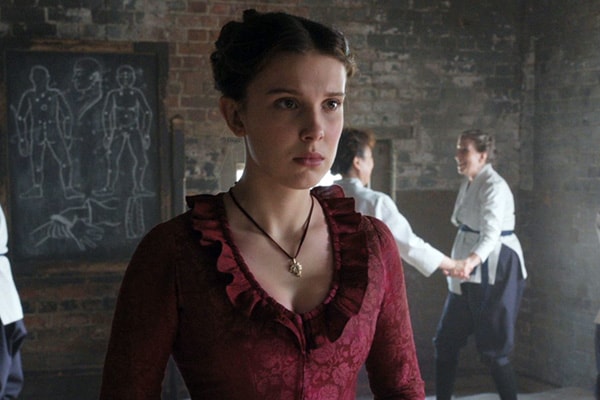
“I don’t naturally have that feeling walking into a room, so I really had to work on feeling as confidant in my own skin as I possibly could.” – Damon Herriman
When it was announced that Quentin Tarantino‘s Once Upon a Time in Hollywood would feature Charles Manson and the Manson Family murders as an storyline element, many commentators worried about the way the Tarantino movie would characterize Manson.
In reality, in the film, Manson — portrayed by Mindhunter Australian actor Damon Herriman, who also plays Manson on that series — is very much a background character. As a result, Herriman ended up playing Manson in two very different projects.
In an interview with Entertainment Weekly, Herriman explains how the seemingly-coincidental arrangement came about:
“Two friends I had that were working on that film already put in a word for me. It was a completely separate situation. People assumed that one job led to the other, but absolutely not all. Nicholas Hammond who plays Sam Wanamaker, the director in OUATH, I know him from Australia because he lives here now and Timothy Olyphant, who I worked with in Justified, they had thrown my name about to each other because they both knew me when they were talking about who should be going for Manson. And then Tim spoke to Quentin because he knew that Quentin had been a fan of Justified, which I did for many years. So, once he made that connection, the audition came through from that. I was already doing [Mindhunter]. I had mixed feelings about it because I can’t say no to auditioning for Quentin Tarantino, but I also know that it’s highly unlikely that he’s gonna cast the same guy who’s already playing this character. As it turns out, he didn’t mind.”
Interestingly enough, Herriman portrays Manson in two different time periods in these projects. In the Netflix series, he is portraying Manson in prison about ten years after the events of Once Upon a Time in Hollywood. Herriman spoke about how he portrayed Manson differently in each project:
“From a physical and vocal perspective, if you listen to Manson around the late ’60s, he does have a lighter tone to his voice and he has a lightness to him. There’s some audition tapes of his online from about 1967-1968 when he’s auditioning for a music contract. He speaks a lot in that and he sounds a lot different than in the jail interviews that you see. He’s got this playful court jester quality… Having read so much about him and watching so much of him was definitely helpful. When I auditioned for OUATH, it was different than any audition I’d ever done in my life because I spent five months at that point working on that very character, that’s a very rare thing to happen.”
When asked how he worked up the physicality of the small-statured Manson (Herriman is reportedly about a half-foot taller than Manson’s reported five-foot-two height), Herriman explained:
“Just watching and re-watching as much as I possibly could and then I would watch him move in a scene and then I would get up in my living room and try to emulate that. He has a particular way of this slippery, snaky way of moving. He’s also quite hunched which is unusual for a short person because he made himself smaller than he even was, and he was already pretty small. When his hair is that length, he’s often pushing hair out of his face, so I made sure I incorporated that. You just try to get into that person’s body as much as possible. There’s an authority and an ownership of a room that he would have when he walked into it. Any room he walked into, when you saw any of those jail interviews, he thought he was the king and he just arrived. I don’t naturally have that feeling walking into a room, so I really had to work on feeling as confidant in my own skin as I possibly could.”



